Last week, the Raspberry Pi released its long-awaited 64-bit Raspberry Pi OS, which theoretically allows users to take better advantage of 64-bit processors (newer versions of the Raspberry Pi already have 64-bit processors), support more than 4GB of RAM (the Raspberry Pi 4B comes with up to 8GB of RAM), and perform better when working with multimedia content.
Although this is theoretically true, how do 32-bit and 64-bit perform in actual tests? Recently Phoronix conducted a detailed test of both, so let’s take a look at the test data and performance after converting from Raspberry Pi OS 32-bit to 64-bit.
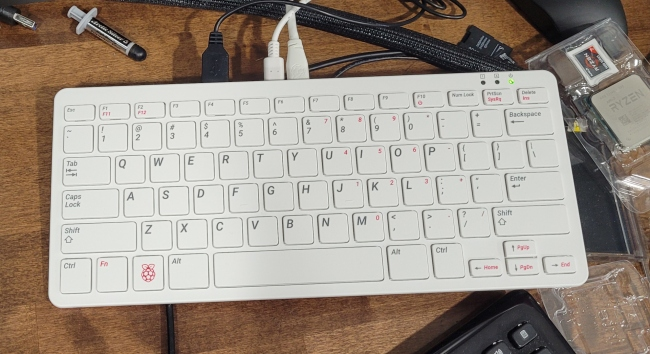
For the sake of fairness in testing and to eliminate differences in results due to different processors or memory, the Raspberry Pi 400 was used for this test, and the hardware configuration of the device is as follows.
- CPU: Broadcom BCM2711 Quad-Core Cortex-A72 (ARM v8) 64-bit SoC @ 1.8GHz
- Memory: 4GB LPDDR4-3200
- Storage: SanDisk 16GB
- Decoding: H.265 (4K@60), H.264 (1080P@60, 1080P@30), OpenGL ES 3.0

The Linux kernel version used in this test was 5.10, and the package versions used in the test were all the same. The only difference in the test was switching from the latest Raspberry Pi OS 32-bit to 64-bit.
In the first WebP image encoding test (the lower the score the better, this is a test of Google’s libwebp, using the cwebp image encoding utility), the 64-bit system was 4.5% - 7% faster than 32-bit, both at the default encoding setting and at the quality 100 encoding setting with only a small difference between the two.
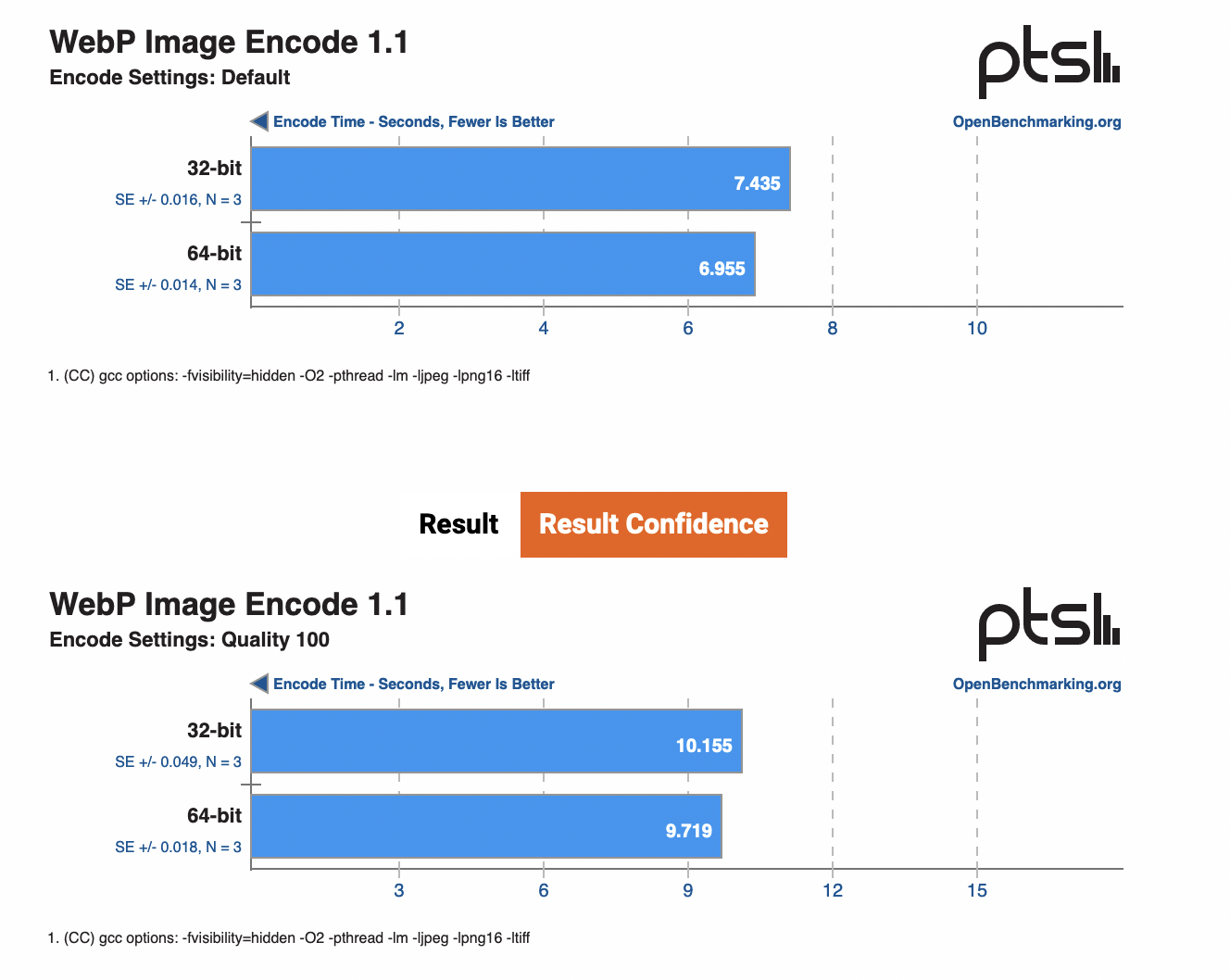
In the next GraphicsMagick test (the higher the score, the higher the test for GraphicsMagick and its OpenMP implementation), there is a more significant difference between the 32-bit and 64-bit test results, with the largest difference between the two in the HWB color space test, where 64-bit is about 47% faster than 32-bit, and in the There is also a 32% performance difference when performing Swirl operations. In addition, there is also a performance difference of about 17% - 28% when rotating, sharpening, and Gaussian noise processing.
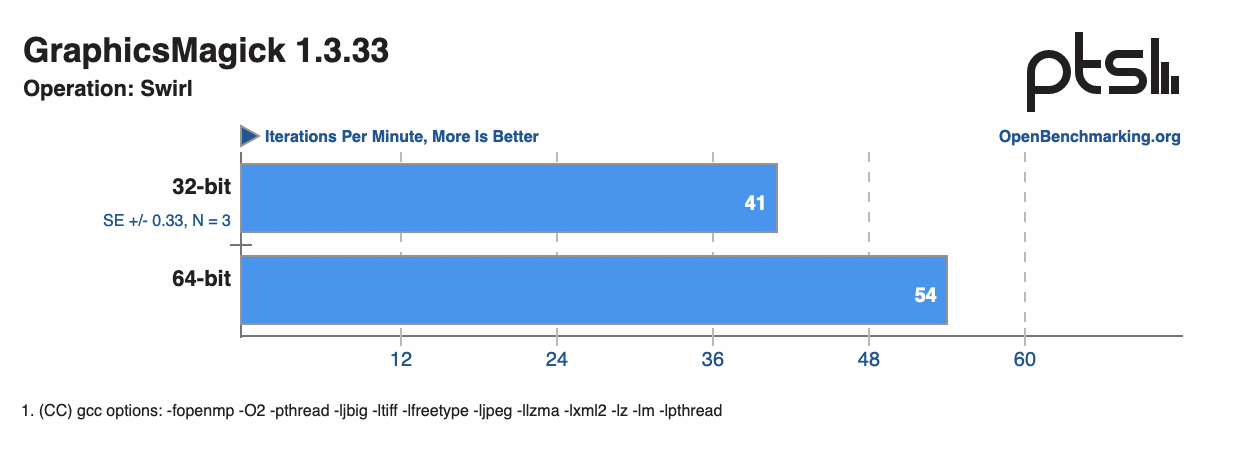
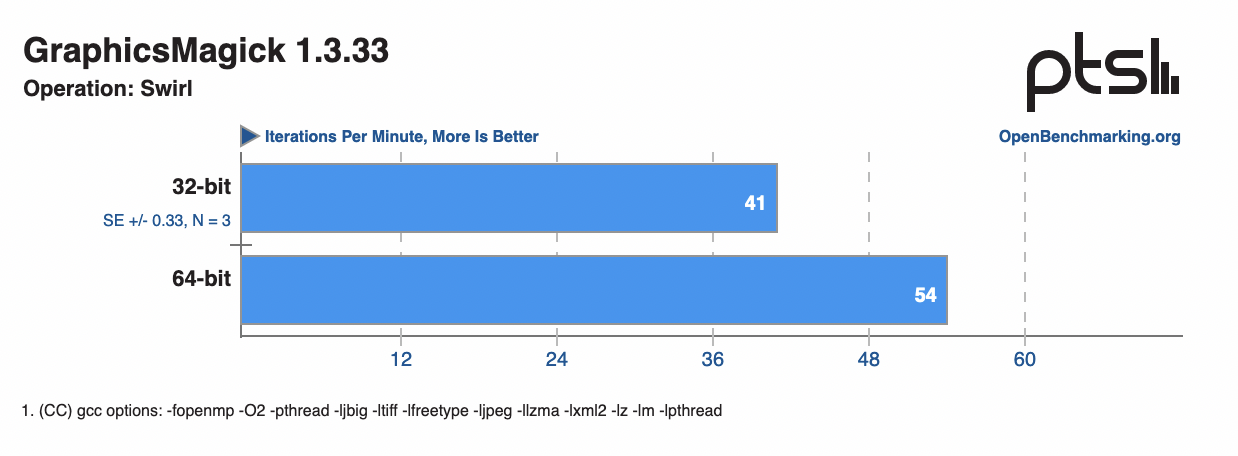
In the FLAC audio encoding test (the lower the score the better, calculating the time it takes to encode a sample WAV file into FLAC format), 64-bit also improves by about 17% over 32-bit; in the LAME MP3 encoding test (the lower the score the better, calculating the time it takes to encode a WAV file into MP3 format), 64-bit improves by about 43%.
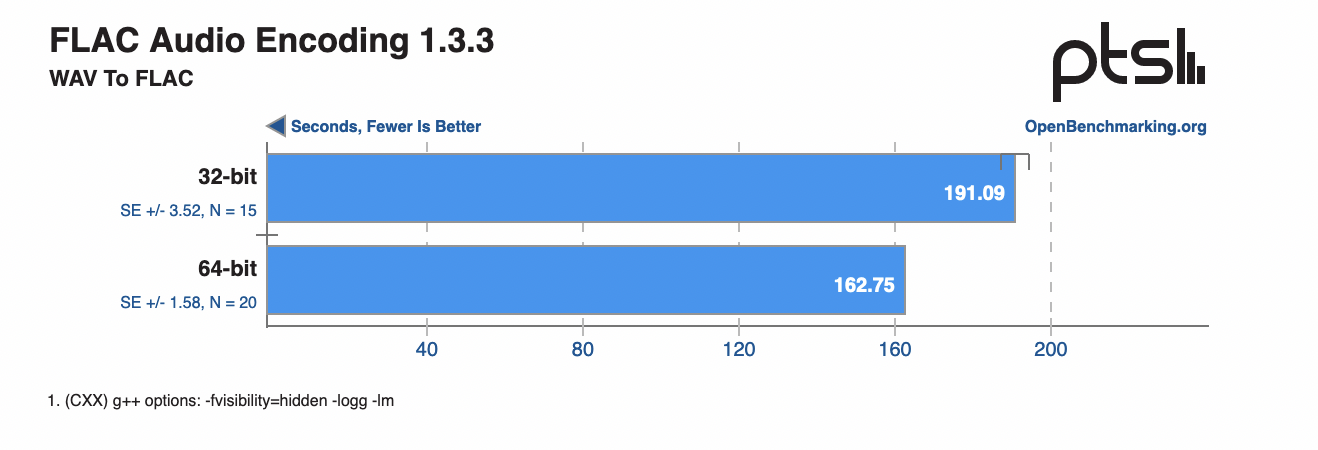
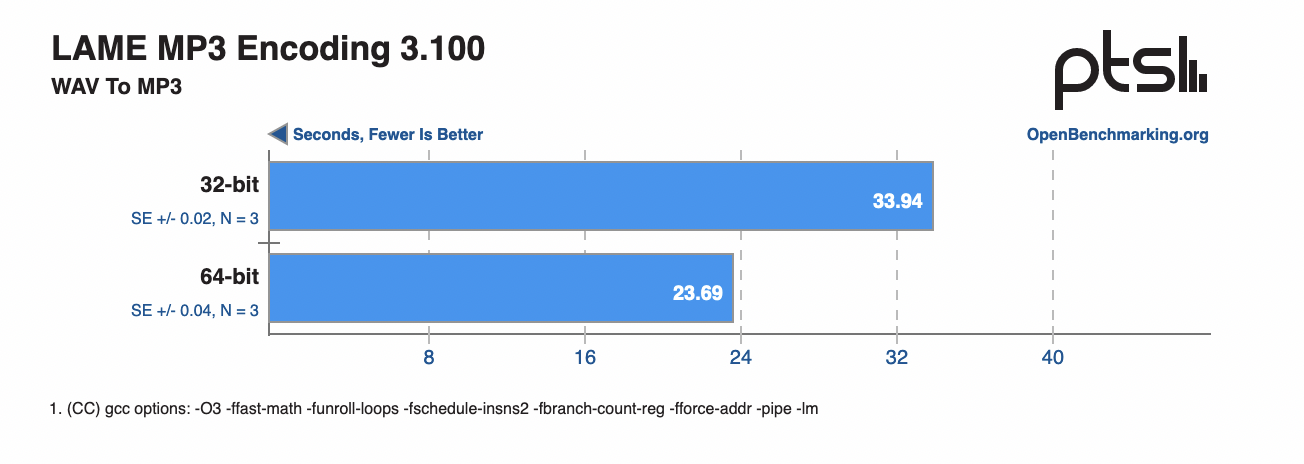
As you can see in the previous tests, 64-bit has more than 40% performance improvement over 32-bit in some test scenarios, and in the Stress-NG test (the higher the score the better, Stress-NG is a Linux stress test tool that tests CPU, Memory, IO, and disk), the performance gap is further magnified. The 64-bit performance improvement in Vector Math is about 232%, and in the Glibc C String Functions test, it is about 196%.
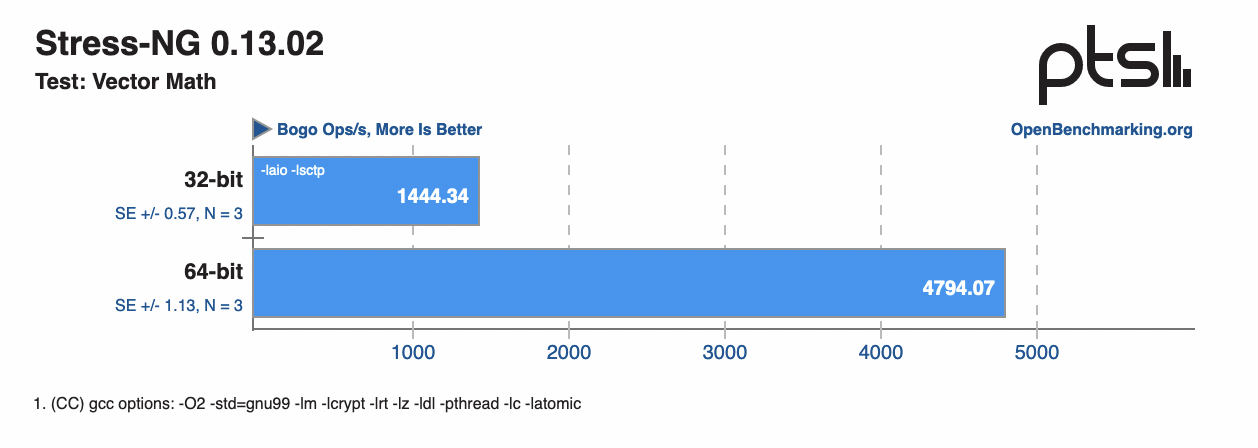
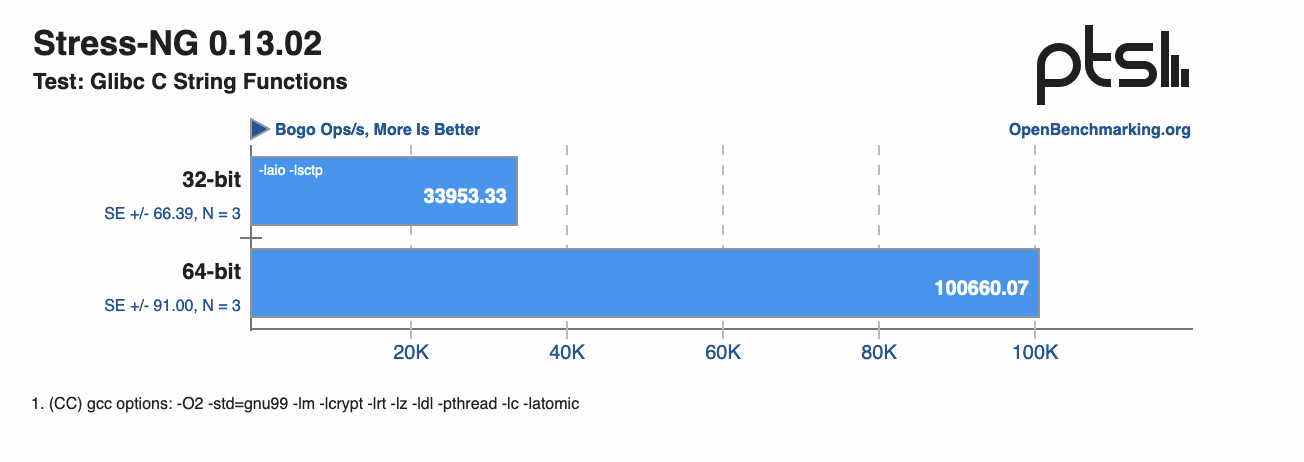
In addition to multimedia coding and stress tests on the system, performance tests were also performed specifically on Python and PHP. In the PyBench tests (the lower the score the better, PyBench reports the average test time for different functions and provides an estimate of the average performance of Python on the system), 64-bit performance was improved by about 13% compared to 32-bit, while in the PHPBench tests (the higher the score the better, PHPBench performs a large number of tests to evaluate all aspects of the PHP interpreter), 64-bit performance is about 54% better.


While the above test results have shown that 64-bit OS performance is substantially improved compared to 32-bit in the same test environment, this is not the biggest performance gap in all test sessions.
In the Sysbench test (the higher the score the better, Sysbench is a LuaJIT-based multi-threaded benchmarking tool that specifically tests CPU and memory), the benefits of 64-bit processor + 64-bit OS are maximized, with a staggering 1380% performance improvement for 64-bit.
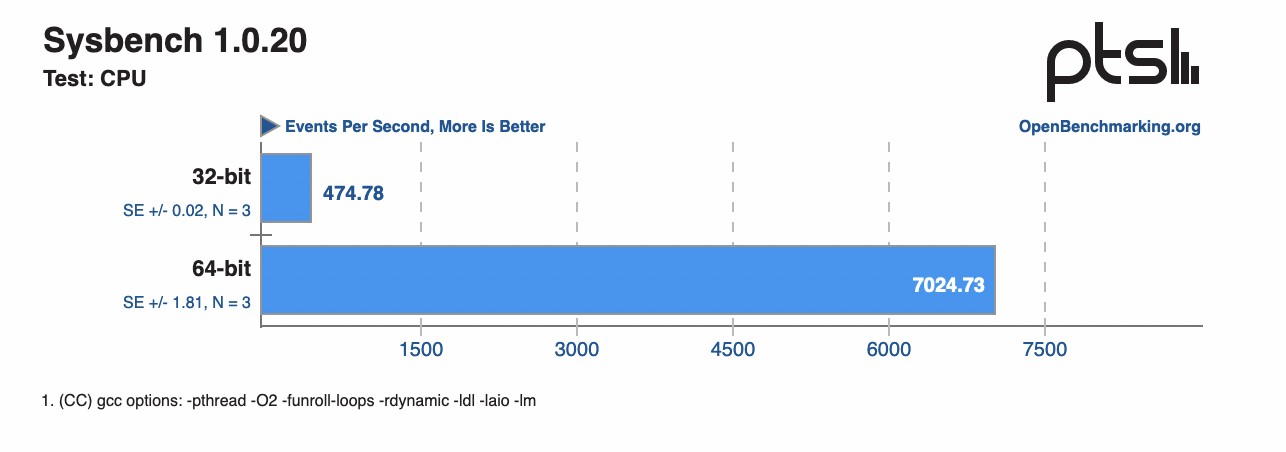
We’ve picked out just a few representative tests from dozens of different load tests here, but across the board, switching the Raspberry Pi OS to the 64-bit version resulted in an average performance increase of about 48%. Those who want to see all the test data can visit the Phoronix website (link).
Compared to other Linux distributions, Raspberry Pi OS is really late to the party with 64-bit systems. But judging from the test results, the 64-bit system is such a big upgrade that users didn’t wait for nothing. You should not find any reason to refuse to upgrade to 64-bit system here.